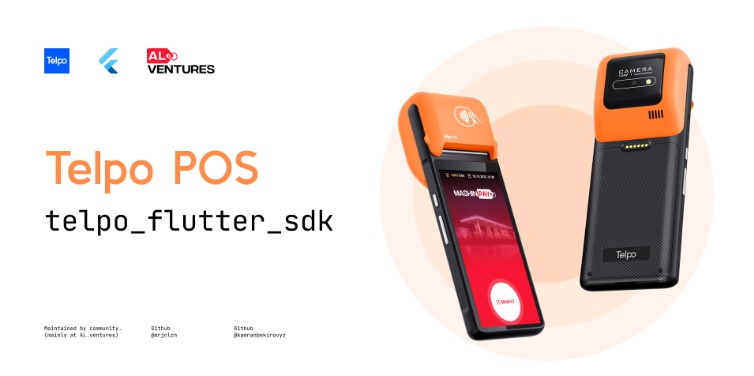Reactive Database Access Kotlin
This repository demonstrates how one could combine great libraries, tools and Kotlin language features like context receivers to work with databases in a convenient and reactive way. The tools include:
- Kotlin with Arrow
- Gradle build based on Kotlin
- Wired together with Spring Boot Framework
- Reactive database access with R2DBC
- Typesafe SQL via JOOQ
- Database Migrations using Flyway
- Postgres database
Dependency remarks
Some libraries that are used are currently unreleased snapshot versions. They will be updated to proper releases as soon as they are published.
Requirements
- Java 17 (install via the SDK Man
- Docker with Docker Compose
Kotlin database access
This project combines some language and library features that provide an accessible and reactive way of working with databases using Kotlin. Just look around the source code. Maybe you find something useful to adopt for yourself.
Context receivers
Context receivers are a new Kotlin feature that enable an
elegant way of passing and using a context in form of
an implicit parameter when calling a function.
Functions can declare a dependency using the context construct
as part of the signature. This context can be used inside the function.
context(DSLContext)
suspend fun plus(accountId: Account.Id, amount: Int): Account {
return update(ACCOUNTS).set(ACCOUNTS.BALANCE, ACCOUNTS.BALANCE.plus(amount))
// ...
}
In this example JOOQs DSLContext is declared as the context
to be available when calling the function. This allows the function
to access all exposed functions and properties of DSLContext like update(...).
It requires the caller to provide an instance of it when calling the method plus:
val dslContext = //...
with(dslContext) {
plus(myAccountId, 10)
}
This feature can be used when passing a context between
methods is required or helpful like a transactional context
as used by JOOQ for example.
// ...
with(transactionalDslContext) {
accountRepository.plus(transfer.fromAccountId, -transfer.amount)
accountRepository.plus(transfer.toAccountId, transfer.amount)
transactionRepository.save(transfer)
}
All function calls to the accountRepository and the transactionRepositry
are using the same transactionalDslContext as their context
passed via the with() construct.
Inline classes
The ability to encapsule value objects without runtime overhead in proper types is possible in Kotlin using inline classes. This allows us to model scalar values like UUIDs references for foreign key relationships:
data class Customer(val id: Id, val name:String) {
@JvmInline
value class Id(val value: UUID)
}
A Customer.Id is now a proper type and can only be used in
places where a Customer.Id is expected. This would not be possible
if we just used plain UUID as its type.
data class Account(
//...
val customerId: Customer.Id,
// ...
)
The only disadvantage is that you have to wrap and unwrap the value when you need to access it or create an instance of it:
insertInto(ACCOUNTS)
.set(ACCOUNTS.ID, account.id.value)
.set(ACCOUNTS.NAME, account.name)
.set(ACCOUNTS.CUSTOMER_ID, account.customerId.value)
Coroutines
Without diving too deep into the Kotlin way of structured concurrency using coroutines, here is a simple example that using Reactor extensions allow to leverage JOOQs reactive database support in a readable way:
suspend fun deposit(accountId: Account.Id, amount: Int) {
assert(amount > 0)
transactional {
val deposit = Transaction.Deposit(
id = Transaction.Id(UUID.randomUUID()),
accountId = accountId,
amount = amount
)
accountRepository.plus(deposit.accountId, deposit.amount)
transactionRepository.save(deposit)
}
}
using a simple, coroutine based helper method:
suspend fun <T> transactional(context: CoroutineContext = EmptyCoroutineContext, block: suspend DSLContext.() -> T): T {
return dslContext.transactionPublisher { tx ->
mono {
block(tx.dsl())
}
}.awaitLast()
}
This is just a simple example that only covers the use-cases of this demo setup but shows that a readable and reactive database access is possible.
Sealed interfaces
Sealed interfaces allow to model closed hierarchies in a convenient
way especially when one wants to use sealed error types. In this case
sealed interfaces allow a Error.Transaction error to be re-used in the Error.Withdrawal and Error.Transfer
hierarchies. Meaning that for example an Error.Transaction.CreditLineExceeded error needs to be handled when dealing with a Error.Withdrawal error result.
sealed interface Error {
sealed interface Withdrawal: Error
sealed interface Transfer: Error
sealed interface Transaction: Withdrawal, Transfer {
data class CreditLineExceeded(val balanceValue: Int): Transaction
}
}
If you want to dive deeper into this topic please take a look at this inspiring blog post by Jorge Catillo
Arrow with Either
The Arrow library provides a lot of features that
support functional programming in Kotlin. One example of this is
the Either result type that can be used in combination with coroutines
and sealed classes based error hierarchies to provide a
programming model without requiring clients to handle exceptions:
private suspend fun saveCustomer(customer: Customer): Either<Error.CreateCustomer, Customer> = catch {
customerRepository.save(customer)
}.mapLeft { e ->
when {
e.isConstraintxception("customers_name_key") -> Error.CreateCustomer.CustomerNameAlreadyExists(customer.name)
else -> Error.Database(e)
}
}
Run
Make sure that the database is up and running by starting it via:
docker-compose up
Run the demo
./gradlew bootRun
or run the tests
./gradlew flywayMigrate test
Use pgadmin to look at the database schema and data at: http://localhost:5050. Use postgres for the host to connect to.




